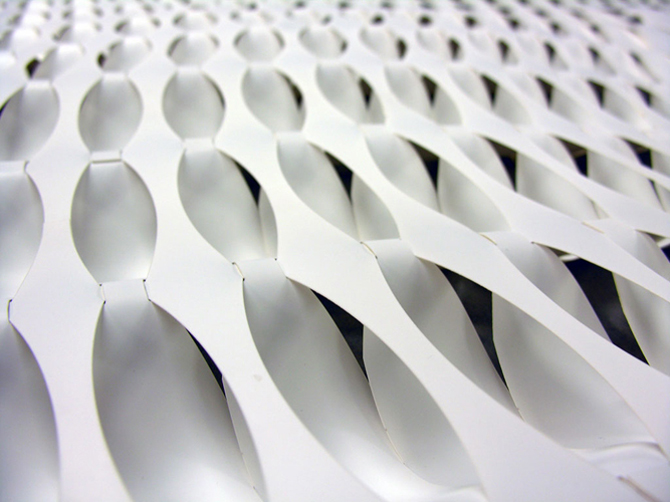
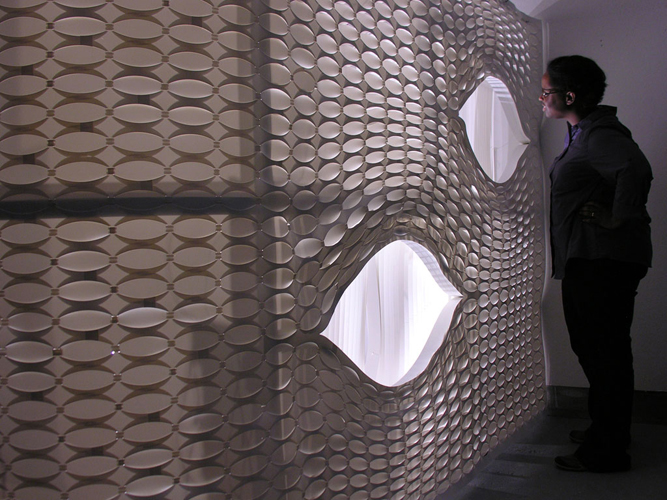
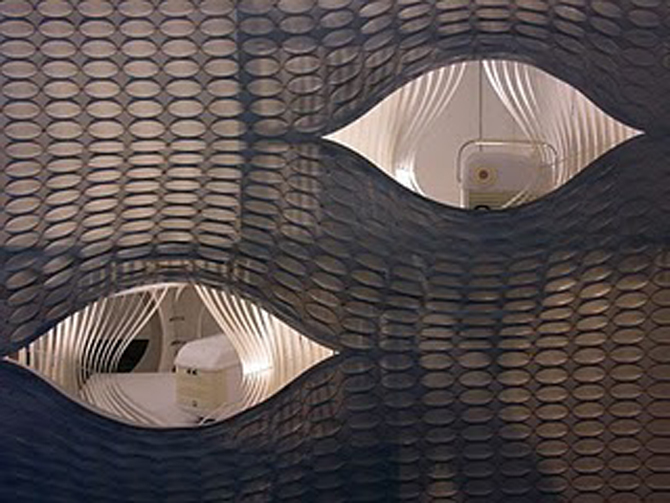
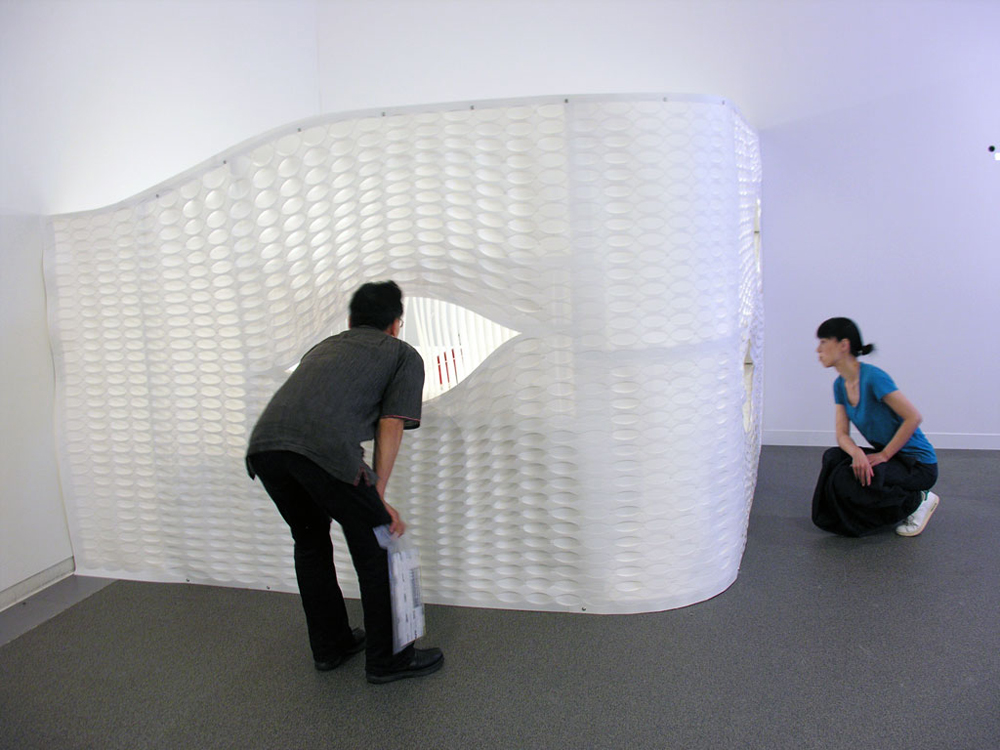
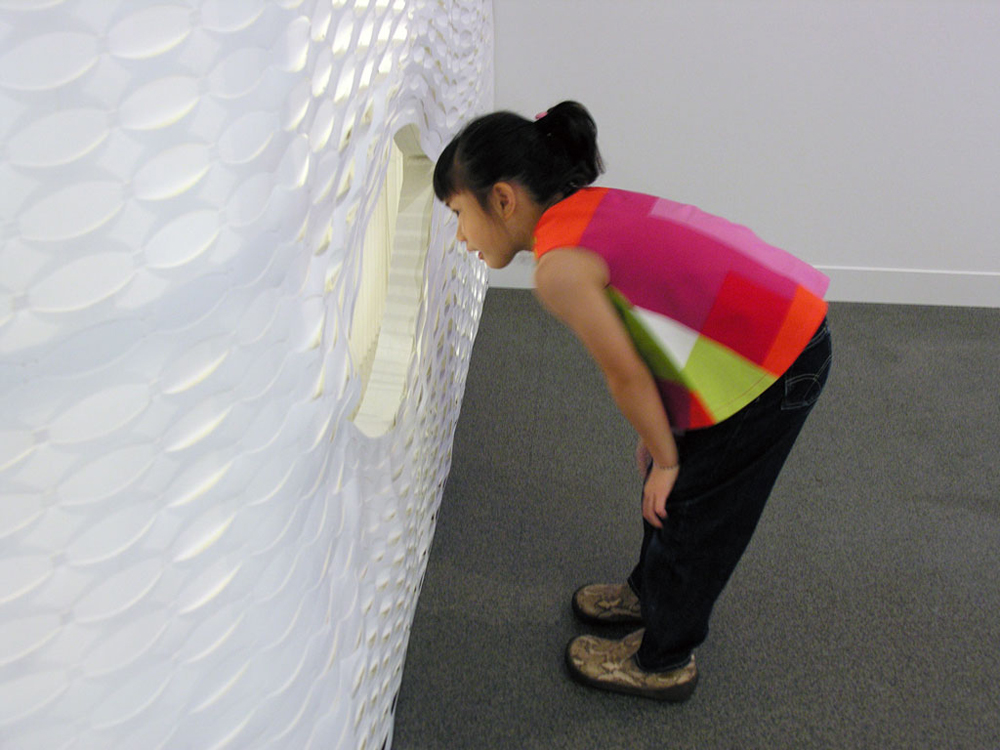
THR_33: Teahouse for Robots
The tea house structure conforms to the traditional dimensions of a Japanese tea house of 9 x 9 x 6’, the space provides a series of interactions between user and space, space and robots.The tea house "eyes" are driven by the OMRON Smile Scan. The Smile Scan uses OMRONs OKAO Vision face-sensing technology. This technology relies on facial data gathered from over 1 million people, accumulated over ten years of study of the human face. The system measures the degree of a person's smile from a camera-recorded facial image, it is based on key point movements and assigns a value between 1% and 100 %. In THR_33 this percentage controls how much the tea house's "eyes" open. The tea house skin was laser cut and stitched together. The skin is made from two precisely cut synthetic paper pieces that interlock with one another.
The project is a collaboration between members of the University of Michigan’s School of Art and Design, and Taubman College of Architecture and Urban Planning. The tea house was designed and built in Ann Arbor; it was later packed and shipped to Kyoto for display in the National Museum of Art throughout the month of July.
Services
Building custom software to help architects, engineers, and builders is what Robert does full time.